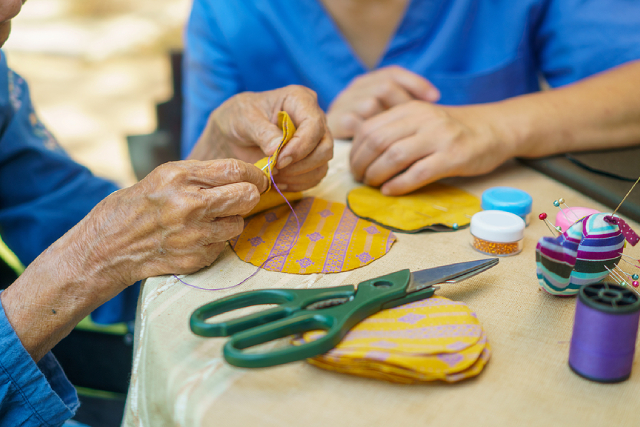If you’re ever in the capital city of South Korean, know that traditional Korean craftwork is something you definitely shouldn’t skip. These craft studios in Seoul can be found primarily in the northern districts of Insa-dong, Bukchon Hanok Village, and Samcheong-dong. Here, you may observe how simple products, such as accessories and utilities, are made utilising the traditional Korean method. You can do this by employing Hanji (traditional Korean paper) and other traditional Korean materials. Read on for some of the top artisan studios that the locals recommend.
1. Gahoe Folk Painting Museum
The 2002-opened Gahoe Museum features a display of traditional Korean paintings and amulets that depict the way of life and aspirations of the Korean people throughout history. Visitors can also fully experience Korean culture inside the Hanok gallery. Old paintings of everyday people, religious art, and roof tiles shaped like people or ghouls can all be found. An exclusive workshop is held here that teaches you how to partake in Korean folk painting yourself on a tote bag.
2. Yejibang
Located in Samcheong-dong, Yejibang is well-known as a traditional art craft workshop. The gallery belongs to Mr Kim Young-Hee, who Kyung-gi province recognized as an intangible cultural asset. In addition to Jade and Norigae, the traditional jewellery donned by the women of Korea, Yejibang also offers ornaments worn in the historical court as well as contemporary brooches and accessories.
Additionally, they offer a unique program that enables guests to create their own traditional jewellery using the same stones used in original works of art.
3. Hanji Chueok
One of Insa-dong’s most well-known craft stores, Hanji Chueok, has also been featured in a variety of international publications for its contribution to the arts.
Hanji is a remarkably strong, fibrous paper created from hibiscus roots and the interior bark of mulberry trees. It enables craft designers to produce aesthetic expressions and exquisite textures, bringing new ideas to the concept of craft or interior decoration via the employment of Hanji paper as well as the traditional craft techniques passed down through generations in Korea.
The legacy of hanji crafts can be experienced in Hanji Chueok. The shop sells a wide range of Hanji-made accessories, picture frames, and home décor goods. Visitors can participate in programs given by experienced artisans to learn how to produce their own unique hanji crafts and purchase exceedingly well-made things.
4. Haneul Mulbit Workshop
Jo Suhyeon, a traditional Korean knotting and dyeing specialist, founded Haneulmulbit, a private institute of traditional natural dyeing.
A large selection of exquisitely dyed fabrics, threads, and stitched works are available for viewing by visitors. In order to foster knowledge of the importance of Korean natural dyeing, notably including knotting and embroidery, which has had an impact on every element of Korean art and culture, the institution also offers a variety of subject-related open workshops for the general public.
The Bukchon Hanok Village, a live showcase of traditional Korean heritage with nearly a thousand Korean homes still representing the Korean way of life, is not far from the institute.
Conclusion
Arts and crafts are an invaluable aspect of Korean culture. The products are exquisite and painstakingly created for our consumption. If you are lucky enough to travel to South Korea and visit Seoul’s vibrant capital city, try your hand at some of them yourself. And if you’re looking to immerse yourself even further in the culture, why not take some Korean language courses at Sejong, where we have qualified and dedicated teachers to help you learn how to speak like a native in no time! Contact us today to learn more!


